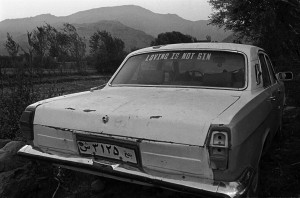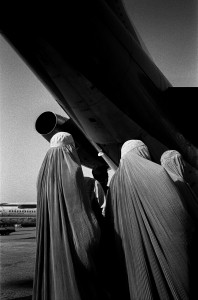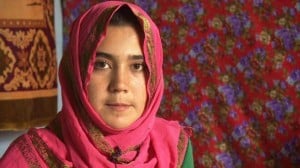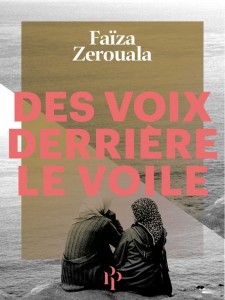Last month, I looked at Eliza Griswold and Seamus Murphy’s work profiling Afghan women poets particular form of poetry, the landay. Their work, as they presented it in an article on Slate, came across as nuanced and reflective (my own words) of Afghan women’s experiences. I was eager to review their book, I Am the Beggar of the World, which is available this month and was kindly provided by the publisher.

Griswold worked with Pashtun women translators to find and present poems that would translate well into English. The book is dedicated to one of her translators, who tragically passed away in Afghanistan in 2012. Seamus Murphy, the photographer, traveled with her to capture photographs along the way. The book is divided into love, grief, and war-related landays translated into English, sometimes alongside Griswold’s commentary about the poem itself.
Murphy photographs scenes from everyday life, mostly candids and a few portraits, that are shown in the book. There are women in some of the pictures, but it doesn’t solely have pictures of women in burqas (or without burqas, for that matter). The decision is refreshing (in contrast, for example, to a 2009 Globe and Mail spread about Afghan women that Krista reviewed for MMW), and serves to emphasize the universal themes that are present throughout the women’s poetry—the themes from the poems both reflect and transcend women’s life experiences. The photographs from Afghan life presented by Murphy beautifully pair with the poems.
The poems themselves represent a variety of subjects: from joyful love to risqué situations, to doomed love and unimaginable sorrow, and even poetry that is historically and politically inclined—they run the gamut of perspectives. I appreciated the range of poems selected in this compilation, as it serves to portray that the women’s poetry—and experiences—aren’t all doom and gloom-related.
Far too often we are made to feel sorry for the plight of Afghan women under Taliban rule, without hearing stories of creative defiance from the women themselves. Griswold’s work humanely portrays the emotionally rich lives these women lead under grim circumstances brought upon by a history inundated with a multitude array of subjugation.
Which brings me to a question I pondered throughout the book: would we have known about the existence of this poetry without the US intervention in Afghanistan? Griswold believes:
“Many Afghan women know that without the U.S. presence, their plight will be even more dismal. The poems reflect what it means to be caught between the two sides of this conflict, and the impact that war is having on a people and their culture.” (p.10)
Is that point of view truly reflective of most Afghan women’s beliefs? Is there a definitive answer to that complicated question that anyone besides Afghan women can answer?
Let’s take a historical look at how Afghan women have been portrayed in the past: their abuse has been regarded as an explicit reason for America to continue to remain in Afghanistan and perpetuates the mythical savior-victim relationship between the two countries. Back in 2010, in response to a Time cover that placed a photograph of a disfigured Afghan girl alongside the title “What happens if we leave Afghanistan,” MMW posited our own roundtable response. Krista said at the time:
“The thing is, although “saving women” has been part of the Western rhetoric throughout a large part of this invasion, Afghan women have rarely been much of a priority for the coalition forces, whose goal of conquering the Taliban has had them allied with many a violent misogynist over the years of the occupation. This photo, with its accompanying caption, perpetuates the myth of the foreign occupiers as allies and saviors of Afghan women, though this has never really been the case.”

It’s now 2014. Coalition forces scale back their operations in Afghanistan every day. Griswold’s perpetuation of a victim-savior relationship between Afghan women and the US makes little sense; its inclusion within the book is not necessary, as the poetry and photography portrayed within reveal the everyday life resiliency of Afghani women. Griswold places their voice at the heart of the collection, not her own.
It’s impossible to know what life would be like for women in Afghanistan had the US intervention not occurred. While Griswold doesn’t overly emphasize the theme of the US saving Afghanistan’s women, it is a theme that appears periodically throughout her commentary. The overall collection of poems presented in I Am the Beggar of the World shows the diversity in Afghan women’s perspectives as they strive to make sense of their lives. Our role as readers is to read and observe, be shown and not told, and to arrive at some conclusion from the women’s own words. For after all, isn’t that really what poetry is about?












